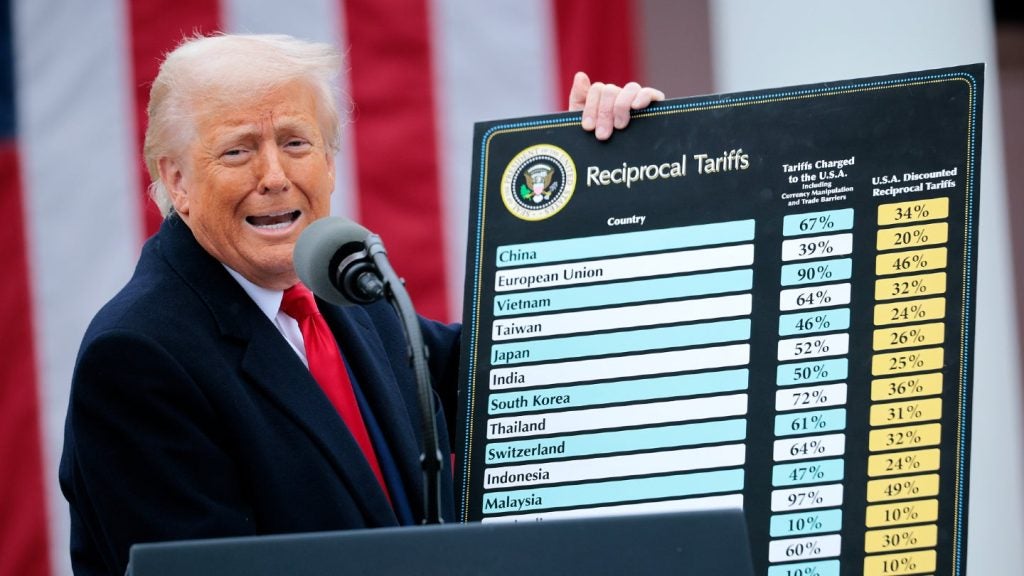
From bike sharing and electric scooters and soon self-driving cars and drone vehicles, the transport ecosystem is arguably undergoing the largest transformation since cars first appeared on the roads back in the 19th century.
With private car ownership expected to peak over the next 20 years, people are increasingly looking to alternative forms of transportation to get from A to B, and moving away from the current model towards shared mobility.
Although this shift towards a diverse range of new transportation could be hugely beneficial in not only lowering carbon emissions, but also in reducing congestion in urban environments, the adoption of new mobility solutions will require an overhaul of city infrastructure, bringing with an urgent need for new mobility regulation.
Regulators versus innovators
However, forward-thinking and fast-moving startups and regulators keen to impose the necessary rules to ensure order and safety have not always seen eye-to-eye.
Johan Herrlin, CEO of transit data firm Ito World told Verdict that in the past, regulators have failed in their response to new transportation model:
“What often happens is there is a pendulum swing. When Uber came on the scene there was no regulation. Now we’re starting to see that individual cities are starting to very aggressively police these mobility solutions; restricting the number of vehicles that can be on the streets and being very punitive about vehicles left in the wrong places and potentially driving up costs for providers which then decreases the mode of transport that is by and large a societal good in the sense that it doesn’t really pollute in any meaningful way.
“Sometimes a new aggressive VC-backed, high growth mobility service enters a new market and there’s a strong knee-jerk reaction from the cities who feel like they are going to lose control”
The result has been that regulators have felt the need to ban some new mobility solutions. Cities such as Beijing have responded by banning bike sharing schemes for introducing new bikes to the city after pavements became overrun with discarded bikes.
Regulation can also be inconsistent or poorly enforced, with many unaware of the illegality of e-scooters on public roads in the UK.
The ongoing Uber regulation saga has been well-documented, with Transport for London revoking the company’s licence last year, and many other cities struggling to manage the influx of ride hailing services.
Keeping up with innovation
It is clear that a lack of understanding of rapidly developing technology can lead to somewhat heavy-handed mobility regulation, but Herrlin believes that problems can also arise when regulations are inconsistent:
“The main problem businesses have is where there is patchwork regulations. That’s where things become really tricky. If New York City has one set of regulations and New Jersey has a different set of regulations and Connecticut has a different set of regulations then it becomes extraordinarily different to manage and plan and grow and scale businesses with a consistent business model. With consistent regulation businesses can adapt and plan and change the way they operate.”
There is no doubt that the shared mobility market is booming, with the global bike-sharing market for example predicted to grow at a rate of 12.5% from 2018 through to 2026, and an estimated 38.5 million trips on e-scooters completed in the US in 2018. With this pace of innovation, it comes as no surprise that regulators and policy-makers are struggling to keep up, often resorting to a patchwork approach.
According to Deloitte, in cities such as New York, ride-hail trips now significantly outnumber taxi trips, and with this switch occurring almost overnight, regulators are forced to be reactive rather than proactive in their rules, and as a result risk “missing an opportunity to proactively shape tomorrow’s mobility environment”.
Herrlin believes that this rapid change has meant that cities are not yet equipped to deal with new forms of mobility:
“Privately owned vehicles have completely dominated urban planning and infrastructure planning for the last hundred years. I think that will begin to change over time. We’re at the very early stages of that with things like the bicycle super highway and dockless bikes in London and scooters in other cities. The variety of choices the public has has increased, but the way they can leverage those options on the road hasn’t changed much.”
The danger of over-regulation
Although controlling the meteoric rise of ride-hailing services, ensuring public safety is not put at risk by shared bikes and e-scooters, and countering the potential public nuisance caused by an introducing new vehicles, regulators are in a balancing act between these concerns and creating an environment that encourages innovation.
Earlier this year, the UK Department for Transport published its Future of Mobility: Urban Strategy report, looking at the laws surrounding new forms of transportation to ensure that they did not act as “a barrier to innovation”.
Herrlin believes that if not carried out correctly, there is a danger the over-regulation could stifle stop new innovations from becoming a reality:
“Too heavy-handed regulation will stifle innovation and will stop some of these really interesting modes of transportation from playing out in the experimental way that they are entering the market. This is a far from settled market so it’s still early stage and there are a lot of interesting concepts being experimented with. If you put too heavy-handed regulation that stuff is going to cool down and you might not get the desired outcome.”
Some cities seem to have struck a good balance. Recently, the city of Melbourne released its ten-year plan for the city, reallocating some road space to cycling, ensuring access to rented vehicles adjusting infrastructure in preparation for drone deliveries.
Herrlin believes that keeping the goal of encouraging innovation at the centre of mobility regulation is key:
“I think it’s really important to articulate the goal of the regulations. If you see these bikes as clutter and you regulate accordingly you will have a certain outcome. If your goal is to encourage a sustainable mode of transportation in a way that works for as many people as possible you’re probably going to take a different regulatory approach…then you can structure regulation to support a path to success, whether that be reducing congestion or reducing pollution or making streets saver for non-polluting vehicles.”
Governments are waking up to the urgent need for regulation in this area, with the UK government has named the ‘future of mobility’ as one of the Industrial Strategy’s Grand Challenges, but ultimately, Herrlin believes that governments and commercial players must collaborate more to best regulate the industry:
“There’s not enough discussion going on at a regulatory level across regions, or within the industry to really get together and come up with a sensible set of regulations that will work for government interest and government interest. It’s frustrating to see that there has been very little progress in that area and it’s probably related to the fact that we’re in the hyper-competitive cycle of innovation where there isn’t a lot of incentive to cooperate with competitors.”
Looking to the future
As well as existing regulatory challenges,new forms of mobility such as autonomous cars and aerial vehicles will bring with them the need for new regulation.
A lot of legislation still needs to be put in place to ensure that trials of autonomous cars safely happen. Herrlin believes that this could be effective if areas of cities are ring-fenced to allow only autonomous vehicles, before this is expanded further:
“I think a lot of the regulatory requirements around autonomous vehicles will have to do with where those vehicles will operate. The initial phase of rollout will be ring-fenced to certain areas…inner London perhaps becomes an area that only accepts vehicles that are autonomous because mixing autonomous and non-autonomous vehicles can be extremely difficult.”
last year, the European Aviation Safety Agency (EASA) opened a public consultation with the goal of establishing the first regulatory framework for vertical take-off and landing vehicles.
It is essential that regulators and those from the industry remain ahead of the game and adequately prepare for the arrival of new forms aerial transport:
“If you think about flying vehicles you kick that up even further. The space above us is very large. With cars you’re talking about a 2D space, but with flying vehicles it’s a 3D space that is much more complex to regulate and the risks are much higher…there’s also how they consider how they interact with other vehicles, and things like noise pollution and vision pollution.”
Read more: How the shared mobility revolution is fuelling a decline in car ownership







